The Ultimate Guide: Parts of a Gutter System

Are you experiencing water damage due to a faulty gutter system? Here’s a fact: the efficiency of your gutter system largely depends on its components. This blog will guide you through each part of a standard gutter system, explaining its roles and significance in preventing water damage to your home.
Dive in with us as we unmask what lies beneath every successful gutter operation!
Key Takeaways
- A gutter system comprises gutters, downspouts, end caps, and miters. All these parts have unique roles in managing the rainwater runoff from your roof.
- Gutters can be seamless or sectioned. They are on the edge of your roof and direct water to downspouts, which then lead it to the ground.
- Outlet tubes connect gutters with downspouts, helping water flow smoothly. End caps seal off gutter ends, preventing overflow, while miters help connect gutters at corners for efficient water movement.
- Elbows control the direction of water flow, whereas hangers support the whole system. Splash blocks under downspouts divert water away from the home’s foundation, preventing soil erosion and other issues related to overwatering patches on the property area.
Understanding the Gutter System
A gutter system is more than just a canal around the edge of your roof. It’s an essential part of your home’s infrastructure, designed to channel water away from the structure and protect it from potential water damage.
Made up of several parts such as gutters, downspouts, end caps, miters, and elbows, amongst others, each component plays a vital role in ensuring efficient water flow.
The type of gutters installed on your roof can significantly vary. You might have seamless gutters or sectional ones, depending on your specific needs and preferences. Seamless gutters are made from one long piece that is custom fit to your house, while sectional ones come in segments pieced together during installation.
Choosing suitable materials for these ensures durability and corrosion resistance over time.
“Choosing the right materials for your gutter system is essential. Aluminum gutters, for instance, are popular due to their durability and corrosion resistance, making them a cost-effective choice in the long run.” – Patrick P- General Contractor.
Downspouts are another critical aspect of the gutter system that often goes unnoticed. They serve as pathways carrying rainwater far away from the base of your house, preventing soil erosion and possible foundation issues due to overwatering patches.
Connected to the gutter via a drop outlet—essentially a drain-like hole—they provide a safe exit path for runoff waters gathered by the gutters from eaves.
Other components like elbows play their part, too, maneuvering water through turns leading towards downspouts, never allowing stagnation. At the same time, fascia boards behind them provide solid backing, promoting optimal performance under heavy rainfall conditions.
Ferrules act as stabilizers, maintaining space between every hanger attached along with maintaining shape, providing the extra support needed when heavily laden with rainwater or debris such as pine needles, further extending life-span expected use regardless of weather experienced throughout year-round seasons, making its maintenance minimal offering peace mind homeowners everywhere.
Critical Components of a Gutter System
The critical parts of a gutter system include gutters, which collect and direct water away from your home’s foundation; downspouts that funnel the water to the ground; outlet tubes that link the gutter to the downspout; end caps that close off gutter runs; miters for joining sections of gutters at corners; elbows, used in conjunction with downspouts to channel water in specific directions; and gutter hangers, which provide support and stability.
“The importance of a properly installed gutter system cannot be overstated. It’s not just about preventing water damage; it’s also about preserving the structural integrity of your home.” – Patrick P- General Contractor.
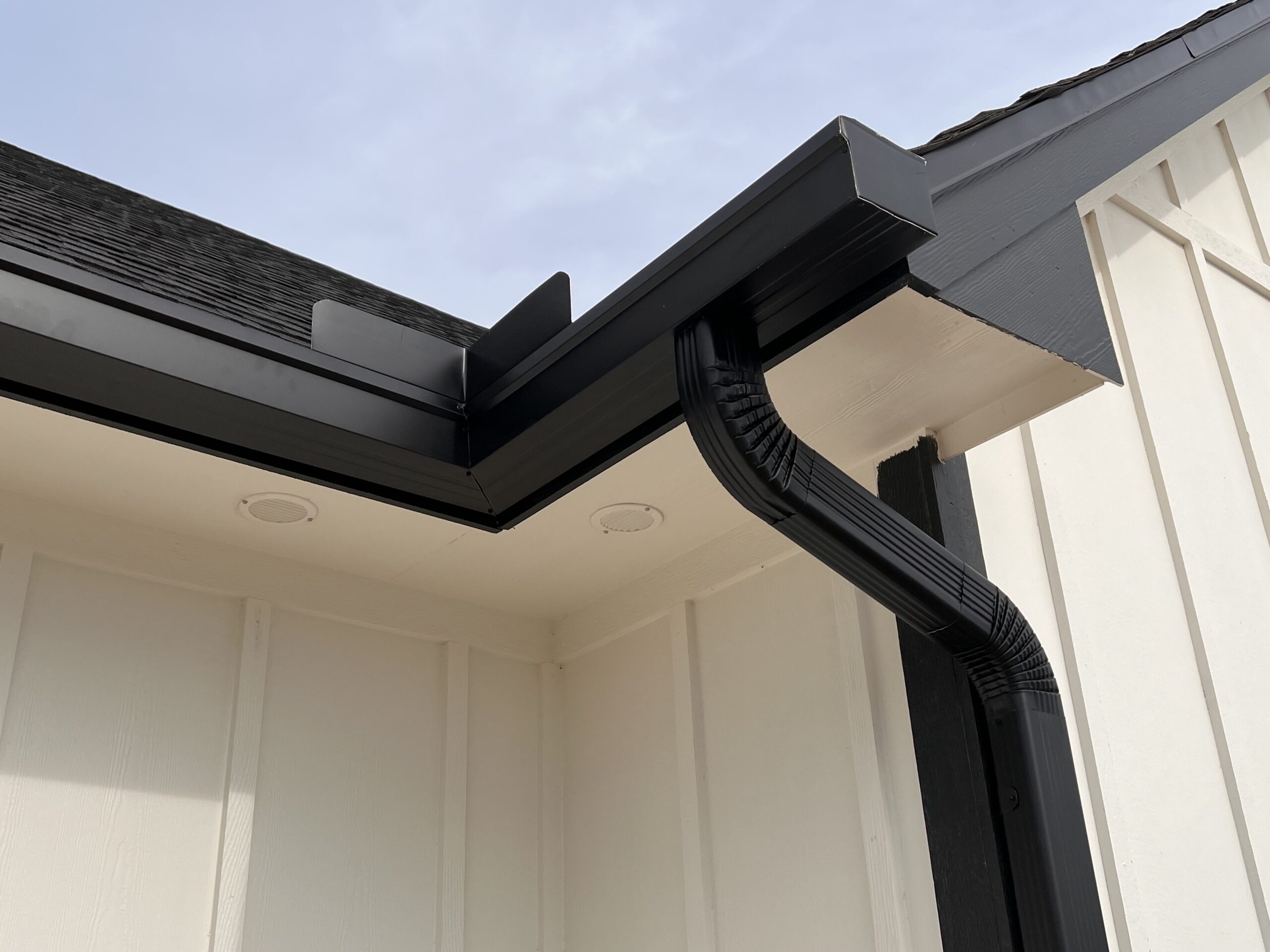
Gutters
Gutters are crucial in home maintenance, protecting the foundation and walls from soil erosion and water damage. They are either seamless or sectioned, with seamless gutters having fewer joints, which helps minimize leaks.
Aluminum gutters are a popular choice among homeowners due to their durability, corrosion resistance, and aesthetic appeal.
These critical components of any gutter system control the flow of rainwater off your roof to avoid overwatered patches that can lead to severe complications like structural issues.
Fitted at appropriate angles on eaves or roof edges, they collect water runoff and direct it towards downspouts for proper drainage – safeguarding not only your roof trusses but also enhancing the overall life expectancy of your house structure.
Downspouts
Downspouts play an essential role in a home’s gutter system. These crucial components, typically constructed from .032 pre-painted aluminum, consist of long pipes designed to direct water flow from the roof gutters to the ground.
Downspouts are connected seamlessly to your gutters via a drop outlet, which provides a path for water discharged from gutters. For optimal direction of rainwater, two types of elbows – A-style and B-style – can be utilized within downspout installations.
To secure them reliably against your house wall, pipe cleats are handy as they fasten the downspout firmly, preventing damage from strong winds or heavy rain. With their standard length often set at ten ft., homeowners can choose between regular and seamless gutters based on their preferences and home exterior aesthetics.
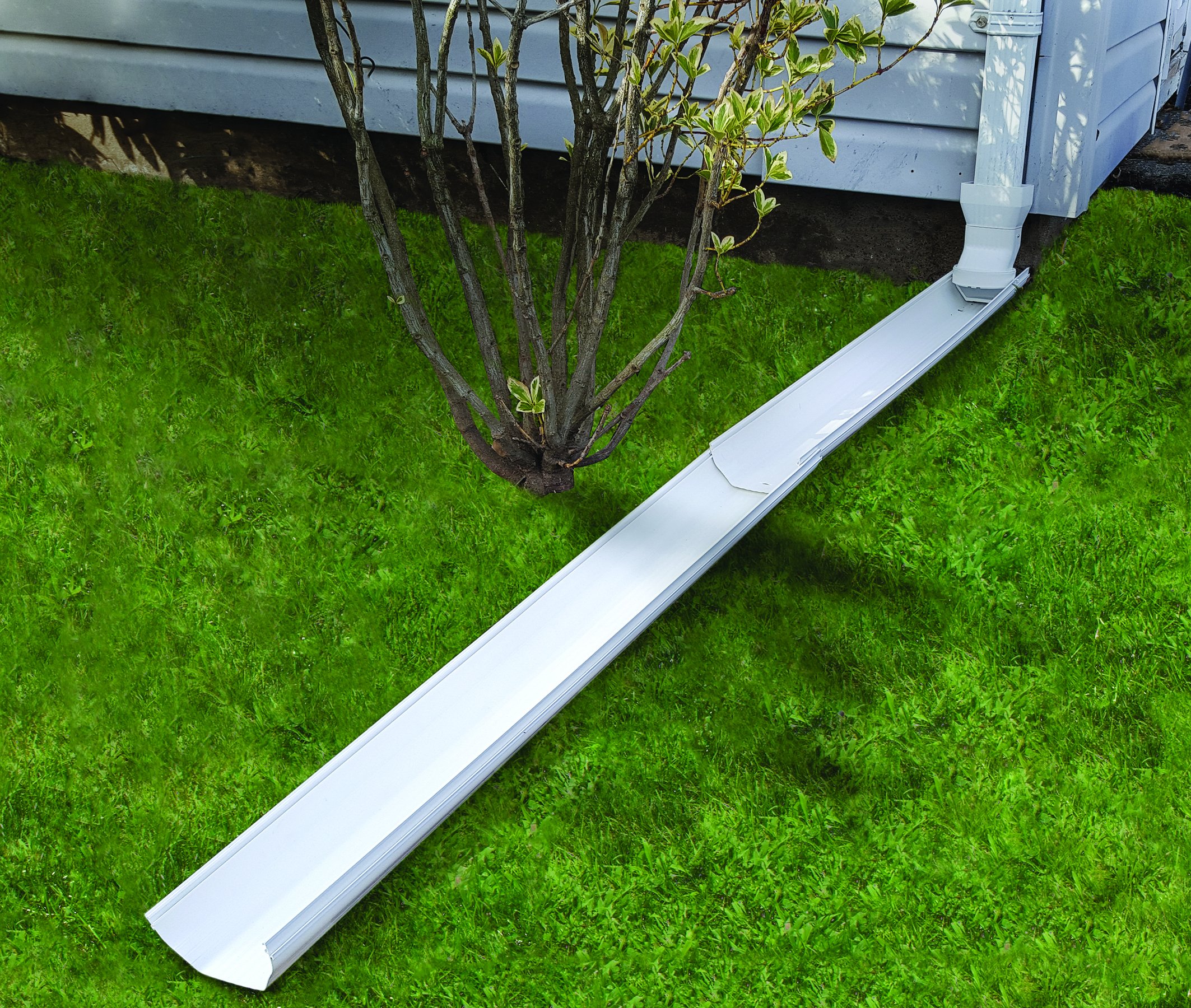
Outlet Tubes
Outlet tubes serve a vital role in the gutter system of your home. These components bridge the gap between gutters and downspouts, managing efficient water flow. They need to align with the shape of the downspouts for optimal drainage capacity.
Paying attention to their size is critical, too; if they’re too small or large for your rain gutters, you might encounter water backup issues or overwatered patches on your property.
Properly fitted outlet tubes ensure water smoothly transitions from the gutters into downspouts, significantly reducing the chances of buildup and overflow. A well-maintained outlet tube protects not just your roof and walls but also helps prevent soil erosion around your home’s foundation by directing rainfall away effectively.
Make sure that your downspout outlets drain far enough away from your home, or you will end up with damage to your foundation. Water needs to drain 8-10 feet away from your home. – Patrick P. General Contractor
End Caps
End caps play a crucial role in your gutter system by sealing off the ends, ensuring water stays within the gutter path. Constructed typically from aluminum, these essential elements prevent overflowing and potential water damage to your home’s foundation or landscaping.
Their application is straightforward but must be done with precision for maximum effectiveness. They are affixed using folded metal or aluminum pop rivets, firmly embedded into an elastomeric sealant that secures a leak-free seal on the interior of your gutters.
This sealer offers strong durability against UV degradation – perfect for areas experiencing heavy rainfall or extreme weather conditions frequently. Furthermore, end caps add a finished look to any gutter installation, enhancing the overall aesthetics of your home exterior while protecting it against soil erosion and overwatered patches caused by rainwater overflow.
Miters
Miters are critical components in the architecture of a seamless gutter system. They serve a crucial role by connecting gutters at corners, ensuring an efficient water flow while reinforcing the seam.
Homeowners will typically find two types of gutter miters: box miters and strip miters.
Box miters form the corner piece for 90-degree gutter angles, offering a clean finish with their one-piece design. Strip Miters, on the other hand, connect two separate pieces of gutters at an angle, providing more flexibility during installation but requiring extra care to ensure they’re adequately sealed against leaks.
Both types perform well with proper maintenance and occasionally require elastomeric sealant for optimal performance.
Elbows
Elbows have a pivotal role to play in your gutter system. These angled pieces help control the direction of water flow, influencing how effectively the system works. A typical home uses two types: ‘A’-style elbows and ‘B’-style elbows.
The former directs water forward or backward, while the latter channels it left or right on a downspout.
Correctly installed elbows should be considered, as they shield your house and foundation from potential water damage. Swiftly moving rainwater away from your property’s base is their primary task, fulfilling an integral function in preventing harmful moisture accumulations around crucial structural elements.
Maintenance is vital to keeping these often overlooked components functioning optimally. While assessing your entire gutter system for signs of impairment – be sure you check on those critical elbow joints as well.
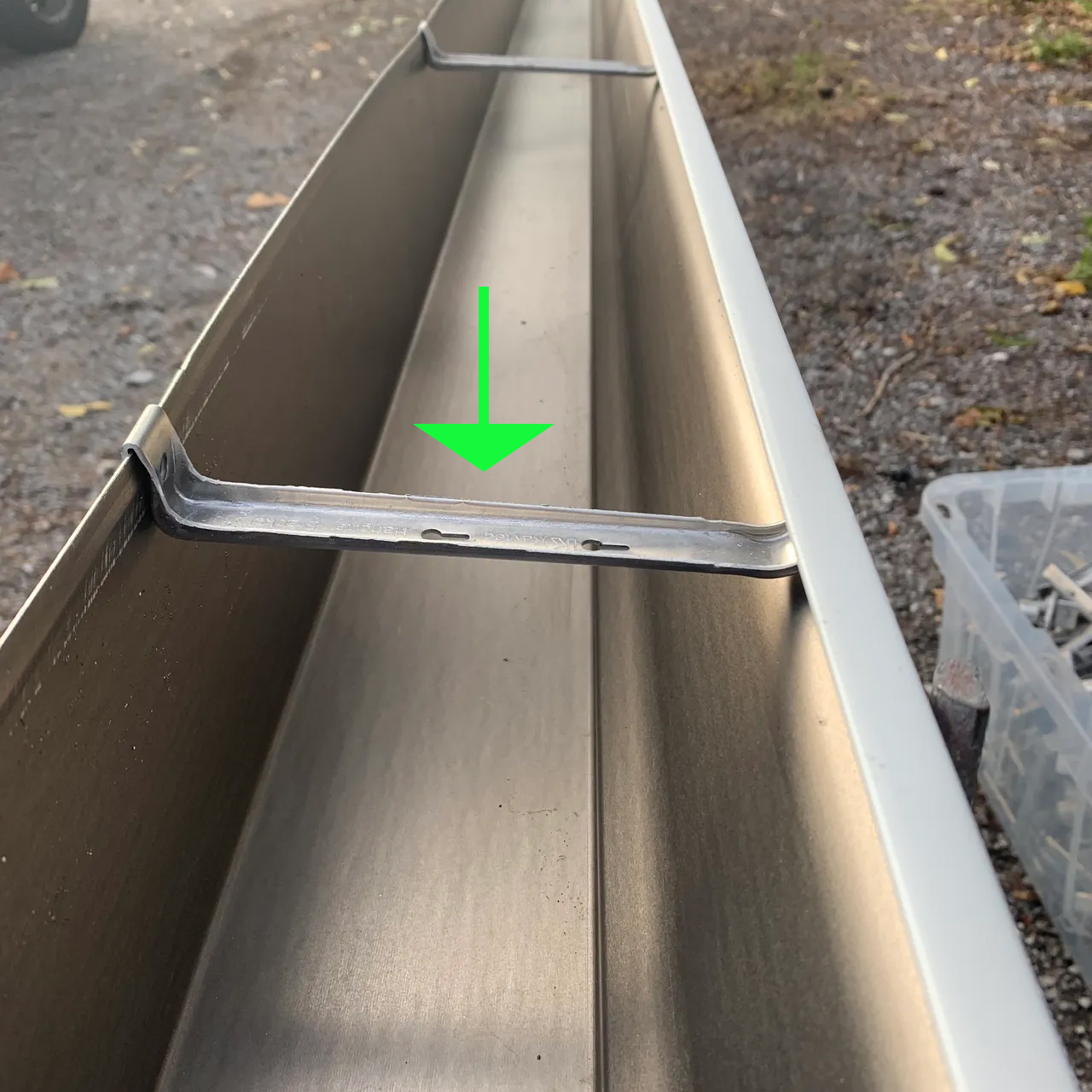
Gutter Hangers
Gutter hangers play an essential role in maintaining the stability and functionality of your gutter system. Acting as a support system, they secure gutters to the roof by attaching them to the fascia boards.
The strength of these hangers allows them to bear the weight of the gutters and any water flowing through them, preventing potential damage or displacement. These handy components are a reliable alternative to traditional gutter spikes and ferrules, known for their durability under different weather conditions.
By ensuring proper installation and maintenance of gutter hangers, homeowners can significantly enhance their home’s defense against soil erosion, water damage, overwatered patches on landscaping, and other challenges posed by uncontrolled rainwater runoff.
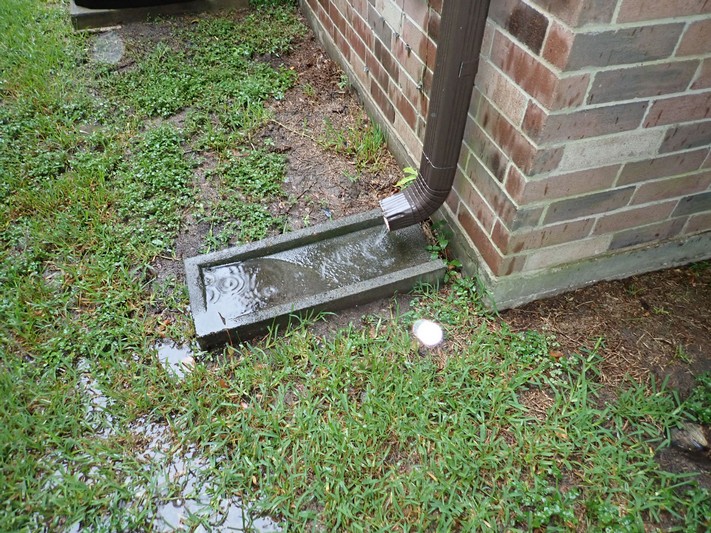
Splash Blocks
Splash blocks serve a pivotal role in your gutter system by diverting water away from the foundation of your home. Positioned directly under downspouts, these pragmatic pieces catch runoff from rain gutters and direct it safely to avoid overwatered patches, soil erosion, or even possible foundation issues.
Available in different materials such as plastic, concrete, or metal, splash blocks can withstand various weather conditions. They come in versatile shapes and sizes, which make them suitable for any downspout configuration – ensuring that no matter what type of gutters you have installed in your house, there’s a perfect splash block for you! Regular maintenance is key; keeping them clean improves water flow and lengthens their service life.
Gutter Accessories for Enhanced Functionality
Gutter accessories not only augment the functionality of your system but also contribute to longevity; this section will provide insights into gutter guards, fasteners, downspout traps, and sealants that can ensure more efficient rainwater management.
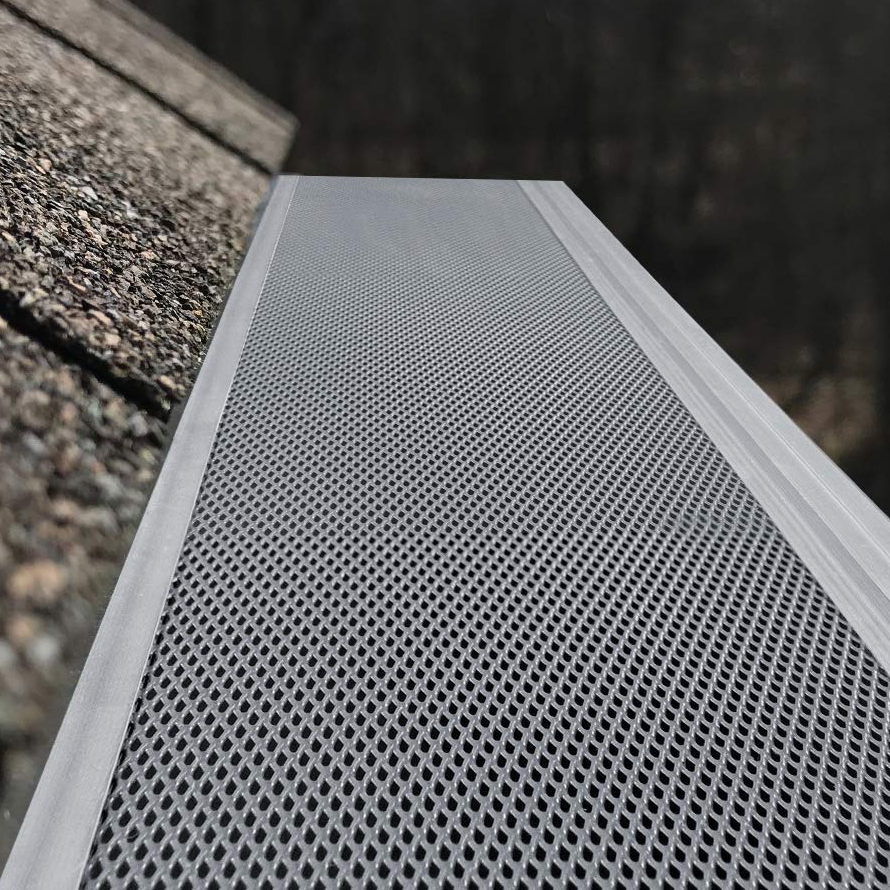
Gutter Guards
Gutter guards are a crucial component of any gutter system. These essential parts keep leaves, pine needles, and other debris from clogging your gutters. By preventing blockages, gutter guards help maintain a steady water flow through your rain gutter system during heavy rainfall.
“A well-maintained gutter system is crucial in preventing water damage to your home. Regular checks and timely repairs can save homeowners thousands of dollars in potential damage.” – Patrick P- General Contractor
Their corrosion resistance makes them durable for prolonged use, ensuring optimal protection against water damage and soil erosion to your home exterior. Homeowners looking for top-tier performance often turn to the Leaf Relief Total Gutter Protection System, rated by Deer Park Roofing Inc., known for its efficiency in managing water runoff and maintaining the aesthetics of homes near trees.
It’s worth noting that investing in quality gutter guards can save valuable time on home maintenance routines like constant gutter cleaning while improving the value of your household property over time. The cost of gutter cleaning may increase due to additional labor required to remove guards and access debris.
Fasteners
Fasteners play a crucial role in the gutter system. They provide support and hold components of the system together, ensuring everything works seamlessly to direct water away from your home.
Gutter screws, aluminum rivets, and stainless steel zip screws are some fasteners commonly used for this purpose. In older gutter systems, you might come across gutter spikes and ferrules serving as fasteners; however, most modern systems prefer hangers for attaching gutters to the roof due to their aesthetic appeal.
Proper installation is vital with these elements – it ensures that your rain gutters stay securely attached even in heavy wind or underweight from ice or accumulated debris.
Downspout Traps
Downspout traps are an essential accessory in your gutter system, working to improve its efficiency. These ingenious devices prevent debris from entering and clogging the downspouts.
With a trap in place, water flows smoothly through your gutters and into the downspouts even when debris piles up. The result is consistent, reliable drainage that helps keep your building safe from potential water damage.
Downspout traps not only prevent blockages but also contribute significantly towards maintaining proper water drainage around your home.
Sealant
Sealant plays a crucial role in the overall functionality of your gutter system. It’s primarily used to prevent leaks. Like glue, it binds components together to form a water-resistant barrier where various parts connect.
When you install gutters along the roof’s edge, sealant ensures that water flows smoothly through without any leakage.
The elastomeric sealant is highly recommended for this purpose due to its excellent sealing properties. This special type of sealant gets applied on the inside of gutters and accessories such as end caps and miters, creating a robust and watertight bond that guards against water damage effectively.
By maintaining an intact seal, disruptions within the system are minimized—giving you peace of mind and helping prolong your home’s structural integrity.
Conclusion
Gutter systems are crucial in maintaining the health and longevity of your home. These intricate parts function together, ensuring that water damage is not a threat you’ll face. Choosing quality components and keeping up with regular maintenance can preserve both the facade and inner structure of your house from costly repairs due to water damage.
So, pay attention to the importance of understanding each component when planning for gutter installation or repair!
FAQs
1. What are the basic parts of a gutter system?
The basic parts of a gutter system include Miter Boxes, A-style elbows, B-style elbows, Downspout Straps and Brackets, Gutter End Caps, and Hidden Hangers.
2. How does one maintain gutters effectively?
Effective gutter maintenance involves regular checks for Gutter Clogs and Overflows. It also requires proper installation by professionals using heavy-duty bolts and screws for secure attachment to your house wall.
3. How important is Gutter Repair in home improvement?
Gutter repair is essential in protecting the roof corners against water damage, significantly contributing to home value improvement.
4. What materials are best suited for a durable gutter system?
6” Seamless gutters and Prepainted aluminum are recommended building materials due to their durability and ability to withstand rainfall overload.
5. Can I handle Gutter Replacement myself, or do I need professional help?
While some may try DIY solutions, it’s advisable to call upon gutter professionals like Ned Stevens or Deer Park Roofing Inc., both recognized by Better Business Bureau, to ensure perfect installations that boost long-term roof protection.
6. Are there any alternatives to traditional downspouts in managing rainwater flow?
Yes! Rain chains provide an aesthetically pleasing alternative compared to traditional downspouts while still maintaining efficient rainwater drainage from the field of the roof.




